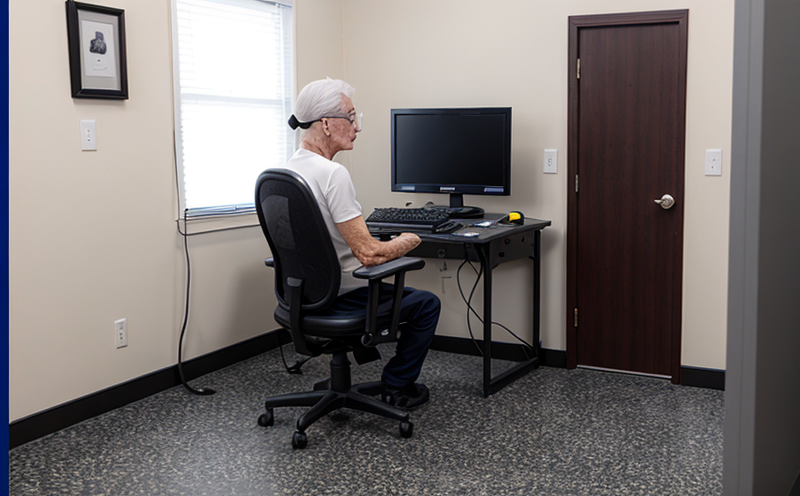ASTM D6545 Flammability resistance after accelerated laundering
The ASTM D6545 test method is a critical procedure used to evaluate the flammability properties of fabrics and materials following extensive washing. This testing ensures that textiles remain safe for use, even after repeated home laundering cycles, which can significantly alter their physical and chemical characteristics.
Flammability resistance is a key factor in consumer safety and product liability, especially when dealing with garments, bedding, or other items that might be exposed to sources of ignition. By simulating the effects of multiple washing cycles under controlled conditions, ASTM D6545 allows manufacturers to predict how well their products will perform after typical home use.
The test involves exposing samples to a specific heat source for a defined duration and then evaluating whether any flaming continues beyond this period. The sample is considered flammable if it ignites within 10 seconds of contact with the flame or if the flame persists for more than 3 seconds after removal from the heat source.
This testing method provides valuable insights into material durability and compliance with fire safety regulations. It helps companies ensure that their products meet not only initial flammability standards but also withstand repeated use in real-world conditions, such as frequent washing or exposure to environmental factors like sunlight and humidity.
The ASTM D6545 protocol is widely recognized for its reliability and accuracy in predicting the performance of materials under accelerated aging conditions. This makes it an essential tool for quality assurance departments, R&D teams, and procurement specialists who need to ensure that their products meet stringent safety standards before reaching market.
The testing process involves several key steps:
- Sample Preparation: Materials are cut into appropriate sizes and shapes for the test.
- Conditioning: Samples are conditioned to a specific humidity level to ensure consistent performance across tests.
- Testing: Samples are exposed to a controlled heat source, typically an open flame or radiant heat, for a specified duration.
- Evaluation: The behavior of the sample is observed and recorded. The test passes if no flaming persists beyond 3 seconds after removal from the heat source.
The results of ASTM D6545 are crucial for quality control, as they can identify potential flaws in material selection or processing that could lead to increased flammability risks. This testing is often part of a broader suite of procedures aimed at enhancing product safety and regulatory compliance.
For manufacturers and suppliers who value their reputation and customer trust, ASTM D6545 ensures consistent performance across product lines, providing peace of mind that materials will continue to meet flammability requirements even after multiple washings. This service is particularly important for industries where consumer safety and regulatory compliance are paramount.
Applied Standards
The ASTM D6545 test method aligns with several international standards, including ASTM E1357-08(2019), which provides additional guidance on the procedure. These standards ensure that testing is conducted uniformly across different laboratories, thereby enhancing comparability and accuracy.
The protocol used in ASTM D6545 is designed to simulate real-world conditions as closely as possible, making it a reliable predictor of material performance under various environmental factors. This aligns with broader industry practices aimed at ensuring product safety and durability.
By adhering to these standards, laboratories can provide consistent and accurate results that are trusted by regulatory bodies and consumers alike. This ensures that products undergo rigorous testing before reaching the market, reducing the risk of recalls or legal issues due to non-compliance with flammability regulations.
Quality and Reliability Assurance
At our laboratory, we take pride in delivering accurate, reliable, and consistent results for ASTM D6545 testing. Our team of experts ensures that each sample is prepared and tested according to the strictest guidelines set forth by ASTM E1357-08(2019). This includes rigorous conditioning protocols to ensure uniformity across tests.
We employ state-of-the-art equipment, including flame testers and environmental chambers, which are regularly calibrated to maintain precision. Our laboratories are ISO 17025 accredited, ensuring that our methods meet the highest standards of quality assurance.
Our commitment to excellence extends beyond technical accuracy; we also prioritize customer satisfaction by providing transparent reporting and timely communication throughout the testing process. This approach helps clients make informed decisions based on reliable data, reducing uncertainty and enhancing confidence in product performance.
Customer Impact and Satisfaction
Implementing ASTM D6545 testing is essential for manufacturers looking to ensure their products meet stringent safety standards. By incorporating this test into their quality control processes, companies can significantly reduce the risk of product recalls or legal issues related to flammability.
Clients who use our services benefit from enhanced reputation management and increased consumer trust. This testing not only helps in meeting regulatory requirements but also provides valuable insights into material performance under real-world conditions. This information is invaluable for R&D teams looking to innovate within the textile industry.
Our clients often report improved product quality, reduced compliance risks, and enhanced customer satisfaction as a result of our ASTM D6545 testing services. By leveraging these results, companies can make more informed decisions about material selection and processing techniques, ultimately leading to safer and higher-quality products.





